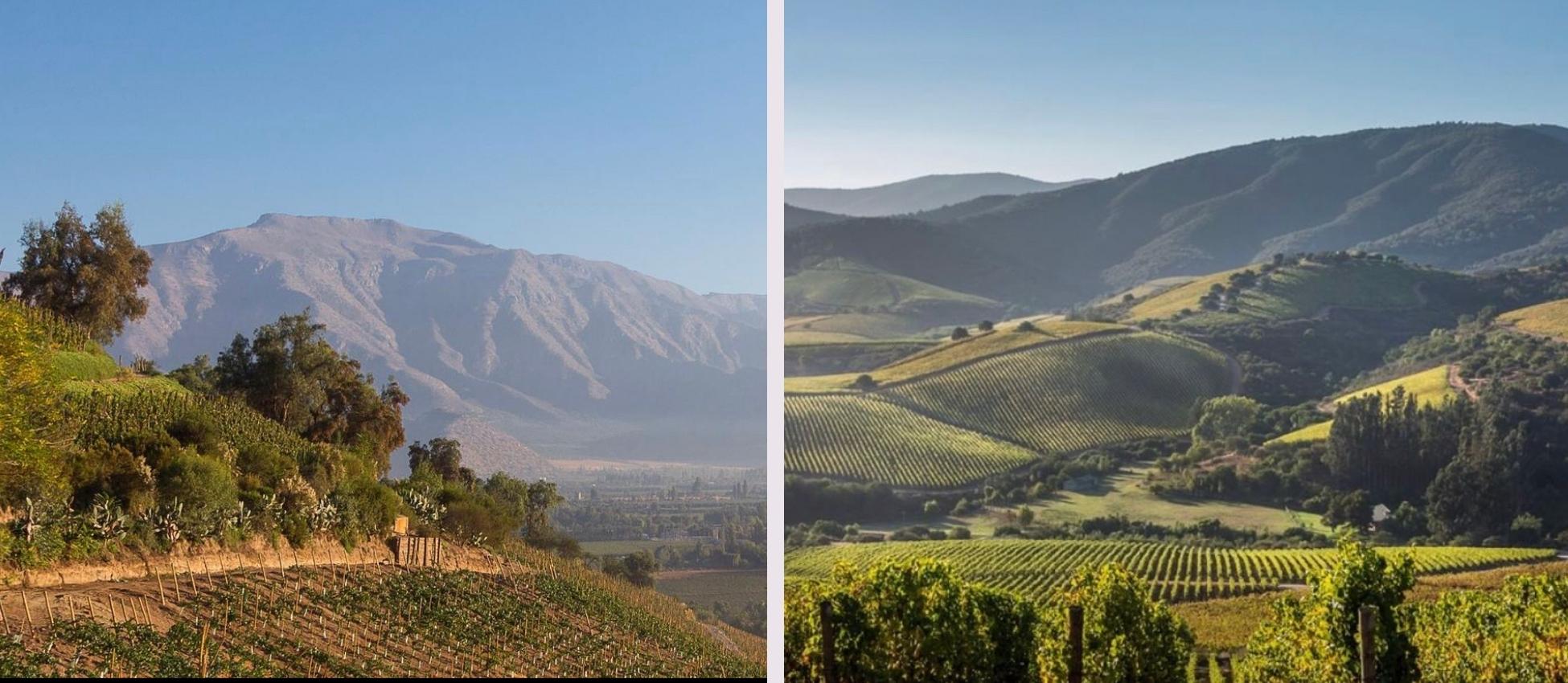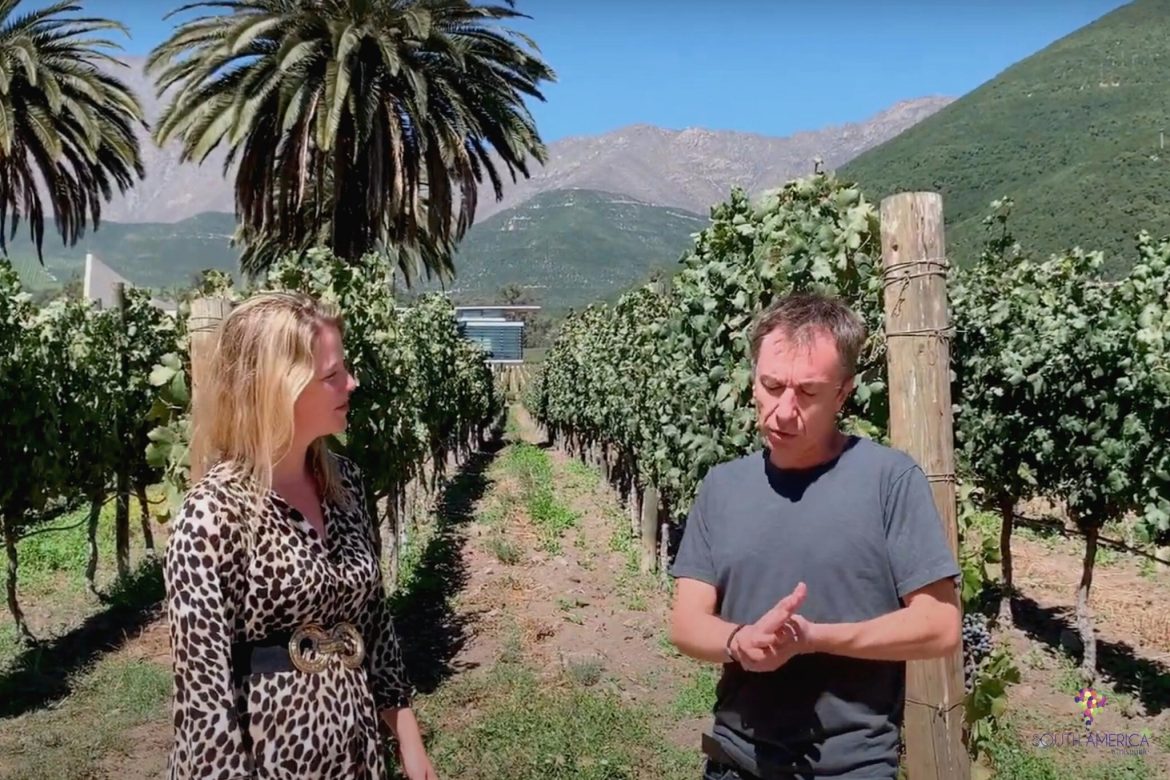Get to grips with the terroir of Aconcagua from Costa to Andes in this interview with winemaker Francisco Baettig, in the vineyards of Errazuriz, as he tells Amanda Barnes how the difference in terroir reflects in the wines.
Viña Errazuriz is a pioneer of Aconcagua valley, making wine there since 1870, and has planted vineyards right from the coast to the Andes mountains. The newest development is towards the coast, Aconcagua Costa, which is cooler because of the influence of the coastal breezes from the Pacific and some sea fog and clouds. These cool conditions make it excellent for growing cool-climate varieties like Pinot Noir and Chardonnay. The soil profile is quite different as well with schist and metamorphic rock.
Further inland, after the coastal range, in the Entre Cordilleras and Andes regions of Aconcagua the influence of the sea is less and therefore it’s warmer. You also get a lot more sunshine in inland Aconcagua, which is very good for ripening Bordeaux varieties as well as Mediterranean varieties, like Grenache and Syrah. A mixture of alluvial and granite rocks here with diverse slopes and exposures make for quite a patchwork of microclimates and soils to work from, as Francisco Baettig explains.
Amanda also asks Francisco to explain the key differences between Cabernet Sauvignon in Aconcagua, with Cabernet Sauvignon from Maipo (and in particular their famed Chadwick vineyard!) And they touch on the identity of Syrah in Chile.
The terroir and the wines of Aconcagua Valley and Aconcagua Costa with Francisco Baettig at Viña Errazuriz
Video highlights: Amanda Barnes interviews winemaker Francisco Baettig
We are in the heart of the Errazuriz vineyard in Aconcagua, very much towards the Andes mountains, can you tell me a bit about the Aconcagua terroir here in Panquehue?
This is the original place where the winery started. We have a diversity of terroir all along the valley but in this particular place, we have the hills with more exposure to sun and the lower part with more soil and more depth. We have different styles of soil, on the lower part we have more clay which is good for Carmenere and the upper part with less soil and more stones is very good for Petit Verdot for instance. So we have diversity around here for red because we have very good sunshine and temperature.
Up on the hills, are those alluvial soils or colluvial?
The lower part is alluvial but rough alluvial because it is the resulting erosion from the creeks and in the upper part is intrusive rocks, like granite.
And you’ve planted on different formations up on the hills, you have your head-trained vines. Why have you planted head-trained up on the cerros (hills)?
In this area, we have some Syrah so we wanted to replicate that but also, with that system, we have quite a lot of shadow and the fruit is covered which is good to keep the freshness, the fruitness, and the acidity.
Errazuriz also has quite an extension across the Aconcagua Valley, going toward the Costa area. Can you tell us the terroir secrets of Aconcagua Costa?
We have developed the whole valley, from the coast to the Andes, and on the coast it is cooler because we have the influence of the coastal breezes from the Pacific and we have more cloudiness so it is very good conditions for cool-climate varieties like Pinot Noir and Chardonnay. There we have a different soil profile with schist and metamorphic rock. As you go inland, after the coastal range, the influence of the sea is lower so it starts to get warmer and this is very good for ripening other varieties, like Bordeaux varieties, and even further inland it becomes even hotter and we can grow Mediterranean varieties like Grenache and Syrah.

I want to talk about two varieties in particular. Firstly, Cabernet Sauvignon. As a producer for Errazuriz you make Cabernet here in Aconcagua and also in Maipo. Can you give us a snapshot of the differences and how that expresses very differently in the glass?
In Maipo, we have a classic terroir of Cabernet alluvial soil with the influence of cool breezes from the Andes. A fantastic place for a long, soft ripening with a lot of aromatics. In Aconcagua, we have a diversity of terroir from colluvial, with dryer conditions, more sun and higher temperature so the wines have more structure and tannin. But we also have vineyards near the Aconcagua river that are alluvial, very similar to Maipo and they give more freshness, balance and elegance so we have a mix of the two.
And my second and last variety is Syrah because I always think of Errazuriz as quite an important Syrah producer as well. What’s the difference between the Syrah you produce here in the Entre Cordilleras range and Costa Syrah?
There are climatic differences. The coast is cooler so the Syrah is juicier, expressive with lower alcohol and a lot of spiciness whereas in Aconcagua we have a riper style, richer Syrah with more fruit and less spice. The contrast due to climatic differences is very interesting.
Want to know more about the
wine regions of Chile?
ORDER YOUR COPY of The South America Wine Guide now!
E-book AVAILABLE ONLINE too.
Interested in watching some more videos?
Exploring Miguel Torres’ Escaleras de Empedrado in Maule
The extreme terroir of Calchaquí with Colomé winemaker Thibaut Delmotte
Cellaring wine under water… A tasting of Bodega Oceanica’s Ultramar Albariño in Uruguay
Read more about Viña Errazuriz in our winery guide online!


